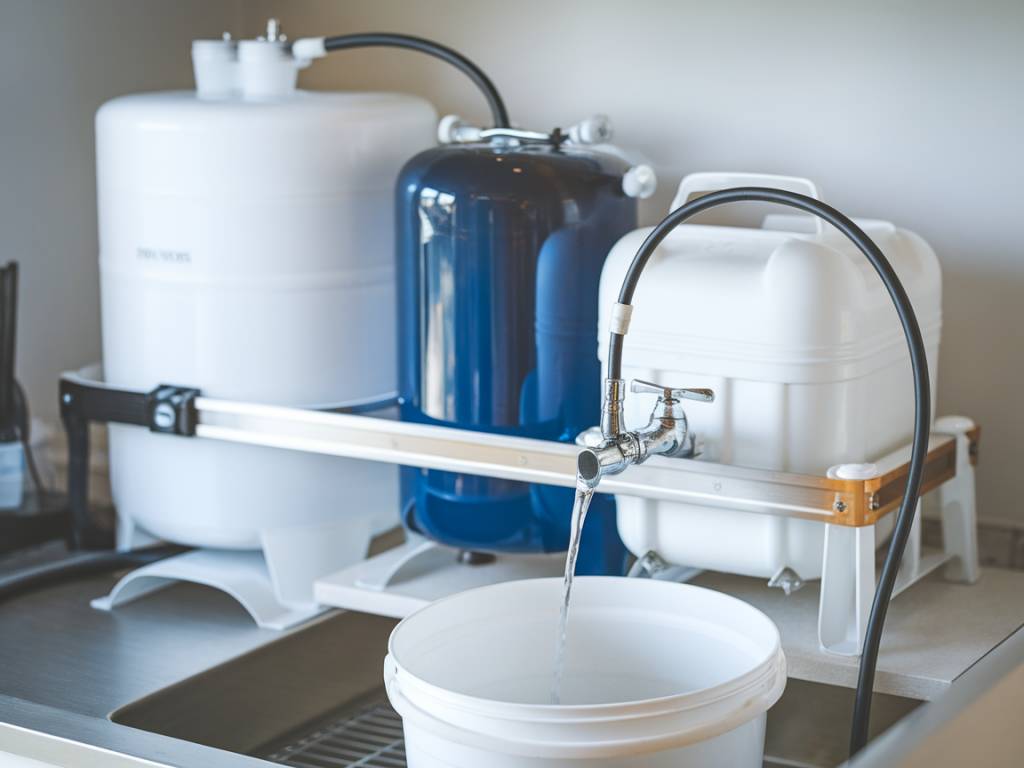Understanding Reverse Osmosis Filtration for Clean Drinking Water
Water is essential for life, but not all water is safe to drink. Contaminants such as heavy metals, bacteria, and chemicals can lurk in what appears to be crystal-clear water. Reverse osmosis (RO) filtration offers a powerful solution to purify drinking water effectively. But how does it really work? Let’s dive into the details.
What Is Reverse Osmosis Filtration?
Reverse osmosis is a water purification process that removes impurities using a semipermeable membrane. This process forces water through a fine membrane that blocks contaminants while allowing clean water to pass.
Unlike carbon filters, which trap pollutants by adsorption, reverse osmosis physically separates unwanted particles and flushes them away. It’s one of the most efficient methods for producing high-quality drinking water.
How Does Reverse Osmosis Work?
Reverse osmosis systems use a multi-stage filtration process to provide pure water. Here’s a closer look at each step:
Pre-Filtration: Removing Larger Particles
The first stage of an RO system typically includes a sediment filter and a carbon block filter. These pre-filters serve two main purposes:
- Removing dirt, sand, and rust: The sediment filter captures large particles that could clog the RO membrane.
- Reducing chlorine and chemicals: A carbon filter removes chlorine, pesticides, and volatile organic compounds (VOCs) that could damage the RO membrane over time.
Reverse Osmosis Membrane: The Heart of the System
Next comes the critical phase: the RO membrane. This semipermeable membrane has microscopic pores (as small as 0.0001 microns) that block contaminants while allowing water molecules to pass through. It effectively removes:
- Heavy metals like lead, arsenic, and mercury
- Nitrates and sulfates
- Bacteria, viruses, and parasites
- Fluoride and other minerals
At this stage, up to 99% of unwanted substances are eliminated from the water.
Post-Filtration: Polishing the Water
After passing through the RO membrane, water enters a final post-filter (often an activated carbon filter). This stage enhances taste and odor by removing any remaining trace contaminants or residual chemicals.
Storage Tank and Delivery
Once purified, the clean water is stored in a pressurized tank, ready for use. When you open the faucet, water flows through an additional final filter before reaching your glass, ensuring every sip is crisp and refreshing.
What Contaminants Does Reverse Osmosis Remove?
Reverse osmosis is highly effective at removing a wide range of contaminants, including:
- Heavy metals: Lead, arsenic, mercury, and chromium.
- Salts and minerals: Fluoride, nitrates, sulfates, and calcium.
- Chemicals: Pesticides, herbicides, and VOCs.
- Microorganisms: Bacteria, viruses, and parasites.
Though RO removes beneficial minerals like calcium and magnesium, many systems include a remineralization stage to restore essential minerals for taste and health benefits.
Is Reverse Osmosis Right for Your Home?
RO filtration provides unparalleled water purity, but is it the best option for your household? Consider the following factors:
- Water Quality Concern: If you’re dealing with high TDS (total dissolved solids), lead contamination, or unwanted chemicals, RO is an excellent solution.
- Wastewater Consideration: RO systems produce some wastewater as part of the process. Modern systems have improved efficiency, but it’s worth considering if water conservation is a priority for you.
- Maintenance Requirements: Regular filter replacements are necessary to keep your system functioning optimally. Most filters need changing every 6 to 12 months, while the RO membrane lasts 2–3 years.
The Benefits of Reverse Osmosis Filtration
Beyond contaminant removal, RO filtration offers several key advantages:
- Improved Taste: Say goodbye to unpleasant chlorine, sulfur, or metallic flavors.
- Convenience: Enjoy purified water straight from your faucet without relying on bottled water.
- Health Benefits: Reduce exposure to harmful pollutants while ensuring your body gets clean hydration.
- Environmental Impact: Minimize plastic waste by ditching bottled water for an RO system.
Many homeowners find that investing in an RO system brings long-term savings compared to continuously purchasing bottled water.
Final Thoughts
Reverse osmosis filtration is one of the most effective methods of purifying drinking water, removing contaminants at an impressive rate. Whether you’re concerned about heavy metals, chemicals, or bacteria, an RO system can provide peace of mind and better-tasting water. While it requires maintenance and does produce some wastewater, modern systems are more efficient than ever.
Thinking about installing an RO system in your home? Make sure to choose a high-quality unit with a reputable filtration system to enjoy all the benefits of clean, pure drinking water.



